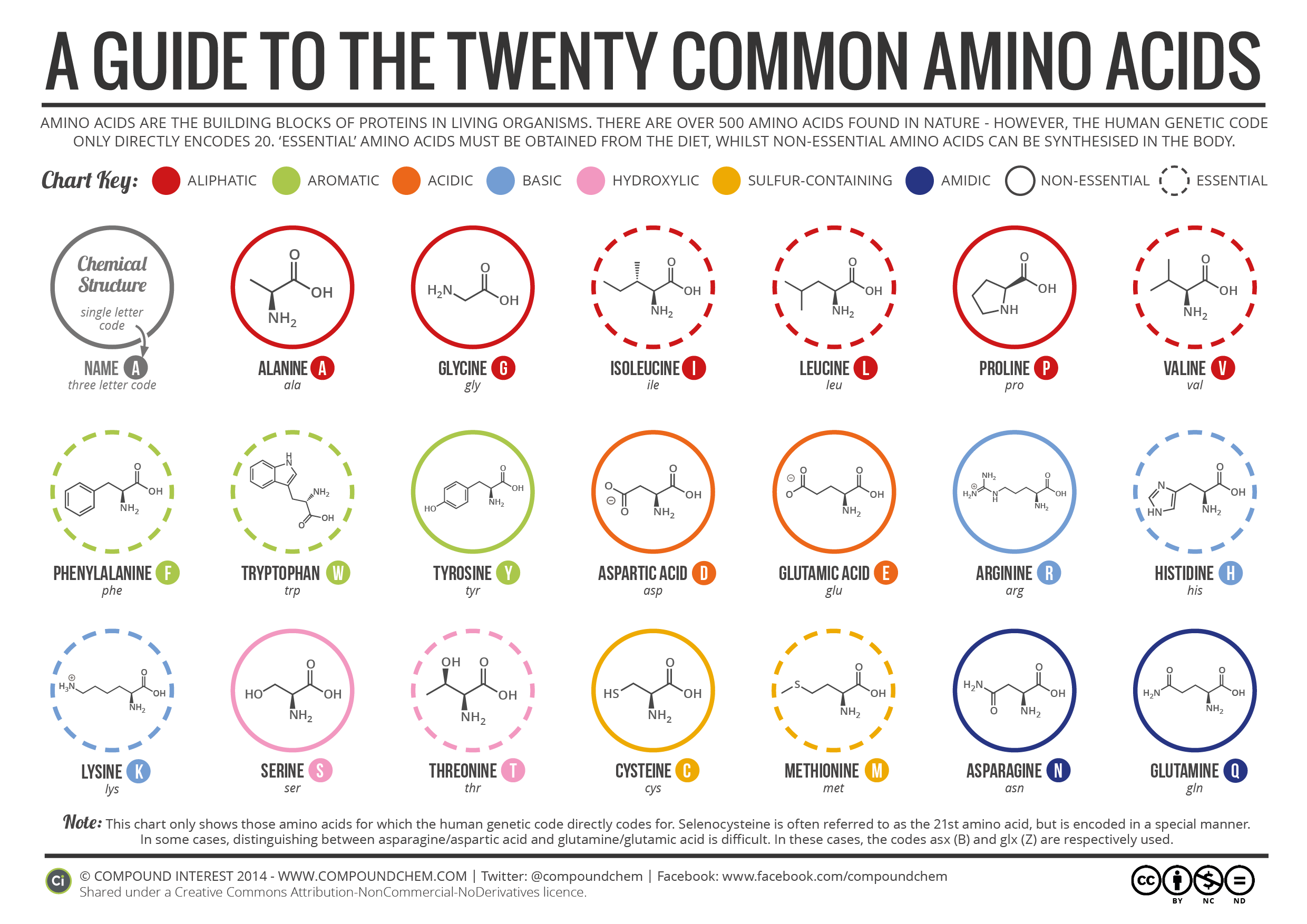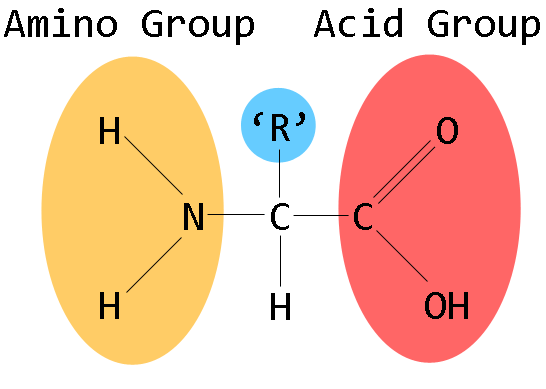Amino acids – The building blocks of life

Imagine you want to build a house. For that you need various materials, such as bricks, cement and perhaps wood. Same thing for the body: it is made up of different molecules. Amino acids make for one of the most important class of building materials. They are the basis of many other molecules, which ultimately ensure that we can stand erect, that we can move about and are able to survive. No (advanced) life without amino acids.
The amino side and the acid side of life
As stated above, an amino acid is a molecule. Molecules are small particles, which can be compared to Lego pieces. The name ‘amino acid is derived from the two invariable sides of the molecule, the amino side (which you see at the left side of the picture below) and the acid side (right on the picture). Apart from these two sides, each amino acid has a so-called “functional group”. This is actually another molecule stuck to the amino acid. This is indicated by “R” in the image below. There are 20 such functional groups, and that means that there are 20 different amino acids.
Making chains
The special feature of an amino acid, is that the body of the “acid end” can attach to the amino-end of another amino acid. That way you can easily create chains of amino acids. A small chain, made up from a few amino acids, may serve as a hormone. A chain of more than 20 amino acids is called a protein.
Bio-logical, right?
Actually, it is only natural: All living creatures need amino acids to stay alive. Of these, they fabricate all kinds of substances needed for proper functioning. That’s pure biology. Below I briefly discuss two examples of amino acids as building blocks in our bodies: the amino acid tryptophan and the protein hemoglobin.
Happy on tryptophan
Our brains use the amino acid tryptophan to make serotonin. Serotonin is involved in many processes in the brain and generally causes us to feel great. If there’s too little tryptophan in our diet, we’re going to know.
Breathing with hemoglobin
The protein hemoglobin is made up of a number of protein chains containing a total of 574 amino acids. These amino acids fold together in a way that they – along with iron in our blood – can bind oxygen. Our red blood cells contain a lot of hemoglobin proteins. Thus, they can transport oxygen from the lungs throughout our body, delivering it at the places where it is needed.

Where do amino acids come from?
Amino acids – like other building materials – derive from your food. You most often eat them in the complex form of proteins. These proteins are broken down by your gut into amino acids and as such absorbed into the blood to fulfill some function elsewhere in your body. But you can also take individual amino acids in the form of supplements.
Which amino acids are important?
Of the 20 amino acids, our bodies themselves can make only 12 of these. The other 8 we must get from our diet. These are the amino acids phenylalanine, valine, threonine, tryptophan, methionine, leucine, isoleucine, lysine, and histidine. These are referred to as the ‘essential amino acids’.
People with a normal diet usually ingest enough essential amino acids in order to function properly. Proper digestion and adequate production of stomach acid is crucial here. Some people have a problem with absorbing specific amino acids. In that case, it can’t hurt to consider ready-made essential amino acids.
For specific indications and/or special purposes you may want to take individual amino acids. Popular amino acids are L-theanine, L-Arginine, L-tyrosine, L-tryptophan and L-Taurine.
In addition to individual amino acids, also very popular are the three branched chain amino acids (BCAAs) L-Leucine, L-Isoleucine and L-Valine. Many athletes looking for a recovery boost, take full advantage of the latter.
Author: Toine Wilke, Dutch nutritionist, biochemist and seaweed expert.



